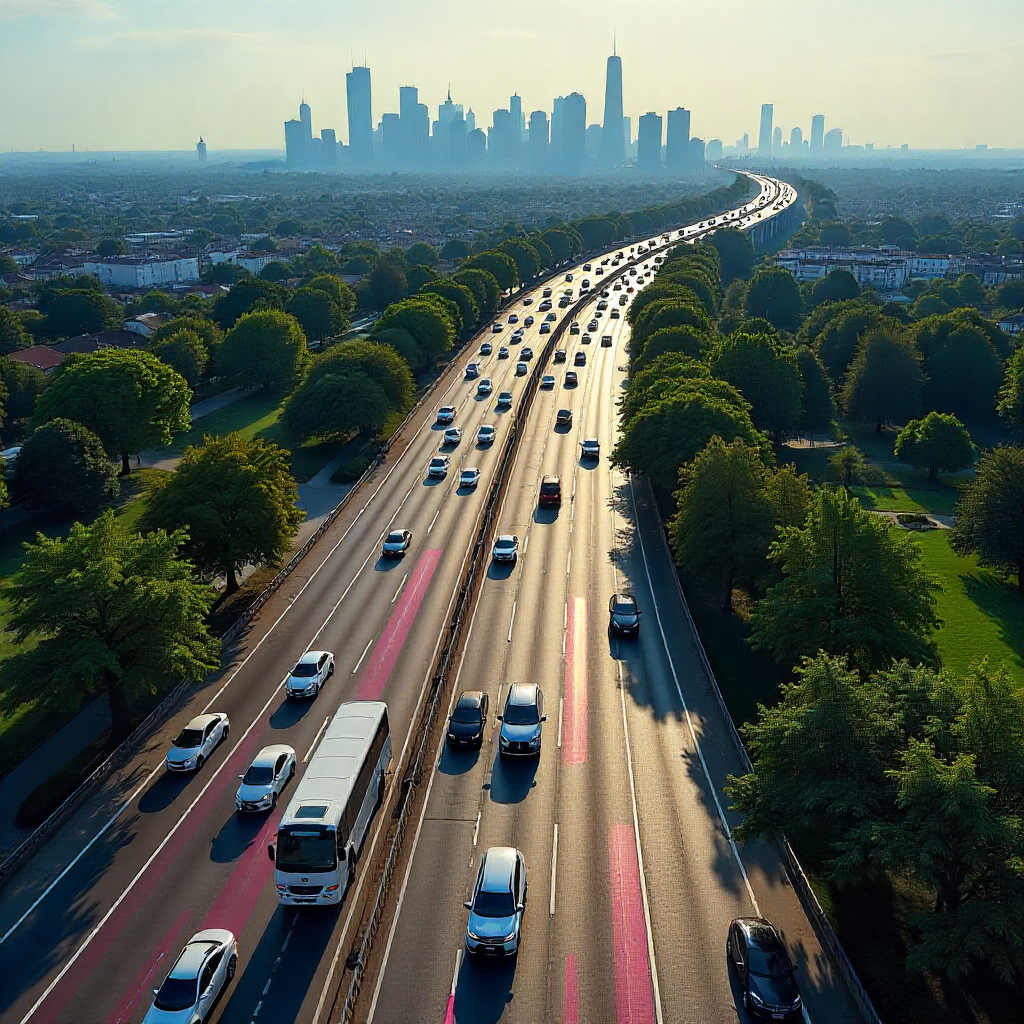Imagine sitting in traffic for hours every day, watching emergency vehicles struggle to reach hospitals, and seeing buses constantly running late. These problems affect millions of people worldwide. But what if technology could solve all these issues? Welcome to the world of Global Traffic Technologies – smart solutions that are changing how we move through our cities.
What Are Global Traffic Technologies?
Global Traffic Technologies refer to advanced systems that use smart technology to manage traffic flow, improve road safety, and make transportation more efficient. These systems connect traffic lights, vehicles, and road infrastructure through internet technology, creating a network that can think and respond instantly to traffic conditions.
Think of it like having a super-smart brain controlling all the traffic lights in a city. This brain can see everything happening on the roads and make quick decisions to keep traffic moving smoothly and safely.
PEOPLE ALSO READ : Gadget Gear Guide 2025 Best Tech for Every Lifestyle
Key Components of Modern Traffic Systems:
| Component | Function | Impact |
| Smart Traffic Lights | Adjust timing based on real traffic | Reduce wait times by 43% |
| Emergency Vehicle Systems | Give priority to ambulances and fire trucks | Improve response times by 25% |
| Transit Priority | Help buses stay on schedule | Increase on-time performance by 15% |
| Traffic Monitoring | Watch traffic patterns 24/7 | Predict and prevent congestion |
Core Technology Solutions That Save Lives
Emergency Vehicle Preemption (EVP) Systems
When an ambulance races to save someone’s life, every second matters. Emergency Vehicle Preemption systems give these life-saving vehicles a clear path through traffic. Here’s how it works:
- Smart Detection: The system automatically detects when an emergency vehicle is approaching
- Signal Control: Traffic lights immediately change to green for the emergency vehicle
- Quick Recovery: After the vehicle passes, normal traffic flow resumes quickly
Real Results: Studies show these systems reduce intersection crash rates by up to 70% and improve emergency response times by 25%. This means more lives saved and safer roads for everyone.
Transit Signal Priority (TSP) Solutions
Public buses and trains are essential for city transportation. Transit Signal Priority helps these vehicles stay on schedule by giving them priority at traffic signals. This technology:
- Detects approaching buses and trains
- Extends green lights or shortens red lights
- Keeps public transportation running smoothly
Proven Benefits: Research indicates that AI-optimized public transportation systems achieve a 10% increase in on-time performance and a 15% reduction in passenger wait times. When buses run on time, more people choose public transport, reducing traffic congestion.
Advanced Smart Traffic Management Features
Modern traffic systems include several advanced features:
Cloud-Based Traffic Solutions
All traffic data is stored in the cloud, allowing traffic managers to monitor and control systems from anywhere. This means faster response to problems and better coordination across the city.
Advanced Algorithms
Smart computer programs analyze traffic patterns and predict when and where congestion will occur. These systems can adjust traffic light timing before problems happen.
Vehicle to Infrastructure Communication
Cars and trucks can now “talk” to traffic lights and road signs. This two-way communication helps optimize traffic flow and warns drivers about potential hazards.
Key Benefits That Transform Cities
Safety Enhancements: Protecting Lives Every Day
Road safety is the most important benefit of global traffic technologies. Here’s how these systems make roads safer:
Intersection Safety: Smart traffic management systems are revolutionizing how cities handle urban mobility by improving safety, reducing congestion, and cutting emissions. Intelligent systems can predict and prevent accidents before they happen.
Reduced Accidents: With better traffic flow and fewer sudden stops, the risk of rear-end collisions decreases significantly.
Pedestrian Protection: Advanced systems can detect pedestrians and cyclists, automatically adjusting signals to give them safe crossing time.
Operational Efficiency: Making Transportation Smoother
Traffic Flow Optimization
- Reduced Congestion: AI-driven traffic management systems can reduce travel times by up to 20%
- Better Signal Timing: Traffic lights adjust automatically based on actual traffic conditions
- Coordinated Systems: All traffic lights in an area work together for maximum efficiency
Public Transportation Improvements
- Reliable Schedules: Buses and trains arrive on time more consistently
- Reduced Wait Times: Passengers spend less time waiting at stops
- Better Service: More reliable public transport encourages ridership
Environmental and Economic Benefits
Smart traffic systems help protect our environment and save money:
Environmental Impact:
- Less fuel consumption due to reduced idling
- Lower emissions from better traffic flow
- Cleaner air in urban areas
Economic Advantages:
- Reduced fuel costs for drivers
- Less wear and tear on vehicles
- Improved productivity from shorter commute times
Real World Success Stories
Case Study 1: Memphis Area Transit Authority
Memphis implemented Global Traffic Technologies solutions to improve their bus system. The results were impressive:
- 43% improvement in average signal delays
- 22% reduction in stops at red lights
- Significant increase in passenger satisfaction
The system helped buses maintain schedules better, leading to increased ridership and reduced traffic congestion throughout the city.
Case Study 2: Capital District Transportation Authority
This transportation authority installed advanced traffic management systems with remarkable outcomes:
- Improved emergency response times
- Better coordination between different transportation modes
- Enhanced safety for both drivers and pedestrians
Case Study 3: 50 Years of Opticom Technology Evolution
Global Traffic Technologies has been perfecting traffic management for over five decades. Their Opticom system has evolved from simple emergency vehicle preemption to comprehensive smart city solutions. This long history demonstrates the reliability and continuous innovation in traffic technology.
Industry Growth and Partnerships
Market Expansion and Acquisitions
The traffic technology industry is experiencing rapid growth. Major acquisitions, such as Miovision’s purchase of Global Traffic Technologies, demonstrate the increasing importance of integrated traffic solutions. These partnerships bring together:
- Advanced hardware technology
- Smart software solutions
- Comprehensive data analytics
- Expert implementation services
Regional Growth and Partnerships
Companies are expanding their reach through strategic partnerships. For example, GTT’s partnership expansion in the Southeast with Transportation Control Systems has brought advanced traffic management to new regions, improving transportation efficiency across multiple states.

Future of Global Traffic Technologies
Smart City Integration
The future of traffic management lies in complete smart city integration. This includes:
Connected Infrastructure: Every traffic light, road sign, and parking meter connected to a central system
Real-Time Data Processing: Smart traffic management encompasses real-time monitoring, predictive analytics, signal control, dynamic route guidance, and enhanced public transportation accessibility
PEOPLE ALSO READ : Financial Tracking Technologies Your Complete Guide to Smart Money Management
Predictive Analytics: Systems that can predict traffic problems hours or even days in advance
Emerging Technology Trends
Artificial Intelligence Integration
AI is revolutionizing traffic management by:
- Learning from traffic patterns
- Predicting optimal signal timing
- Adapting to changing conditions automatically
Internet of Things (IoT) Expansion
Advanced technologies like the Internet of Things (IoT) form the backbone of the seamless synergy between smart traffic systems, enabling better connectivity and data sharing.
Integration with Autonomous Vehicles
As self-driving cars become more common, traffic systems must evolve to communicate directly with these vehicles, creating an even more efficient transportation network.
Implementation Guide: Getting Started
Step 1: Assessment and Planning
- Evaluate current traffic patterns
- Identify problem areas and priorities
- Set clear goals and measurables
Step 2: Technology Selection
- Choose appropriate hardware and software
- Ensure compatibility with existing systems
- Consider future expansion needs
Step 3: Installation and Testing
- Professional installation by certified technicians
- Comprehensive testing of all systems
- Staff training and documentation
Step 4: Monitoring and Optimization
- Continuous monitoring of system performance
- Regular updates and maintenance
- Ongoing optimization based on data analysis
Return on Investment (ROI)
Organizations typically see positive returns within 2-3 years through:
- Reduced fuel consumption
- Improved productivity
- Lower accident rates
- Enhanced public transportation efficiency
Measuring Success: Key Performance Indicators
Traffic Management Metrics
| Metric | Before Implementation | After Implementation | Improvement |
| Average Travel Time | 25 minutes | 20 minutes | 20% reduction |
| Emergency Response Time | 8 minutes | 6 minutes | 25% improvement |
| Intersection Accidents | 100 per year | 30 per year | 70% reduction |
| Public Transit On-Time Rate | 75% | 85% | 10% improvement |
Long-Term Benefits
The long-term benefits of Global Traffic Technologies extend beyond immediate traffic improvements:
PEOPLE ALSO READ : Technology Hacks TGArchive Gaming Ultimate Guide to Gaming Excellence
Community Benefits:
- Improved quality of life for residents
- Better emergency services access
- Enhanced economic development opportunities
Environmental Impact:
- Reduced carbon emissions
- Improved air quality
- Sustainable urban development
Economic Growth:
- Increased property values in well-connected areas
- Enhanced business productivity
- Attraction of new businesses and residents
Conclusion: The Road to Smarter Cities
Global Traffic Technologies represent a fundamental shift in how we approach urban transportation. These intelligent systems are not just improving traffic flow – they’re saving lives, protecting the environment, and creating more livable cities for everyone.
As cities worldwide continue to grow, the need for smart traffic management becomes more critical. The proven benefits, from 70% reductions in intersection accidents to 25% improvements in emergency response times, demonstrate that investing in these technologies is not just smart – it’s essential.
Whether you’re a city planner, transportation authority, or simply someone who wants to understand how technology is shaping our urban future, Global Traffic Technologies offer a clear path toward safer, more efficient, and more sustainable transportation systems.
The future of urban mobility is here, and it’s smarter than ever. By embracing these technologies, cities can transform their transportation networks and improve life for millions of people. The question isn’t whether to implement these systems it’s how quickly they can be deployed to start saving lives and improving communities today.
READ MORE : Super Converters







